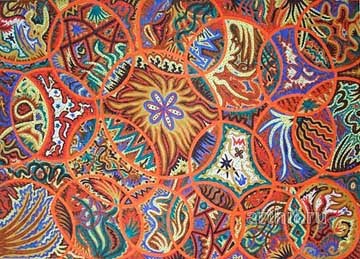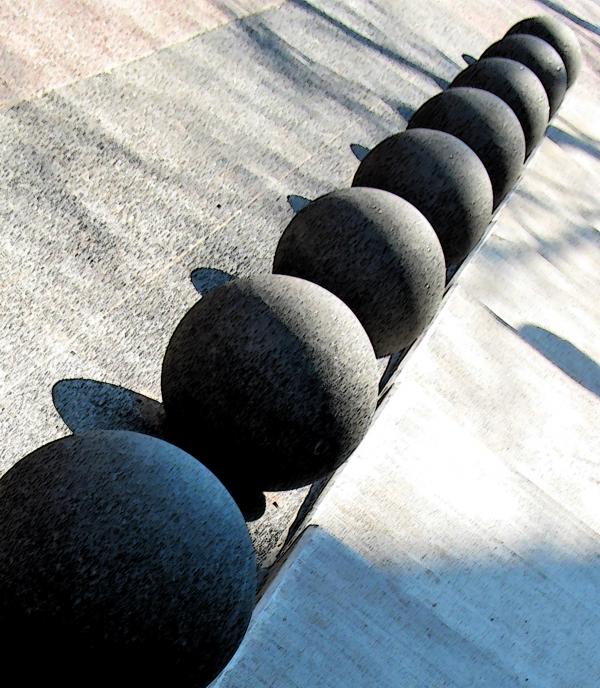


A unified artwork will just look right, complete, and pleasing. “The essence of the beautiful is unity in variety.” – William Somerset Maugham Unity and variety in art are often discussed together, because ultimately an artwork must contain both unity and variety to be a successful work of art, and there must be balance between the two. To create unity or harmony in art, artists arrange the similar components and elements of art to create consistency. Unity or harmony can also be created by merging the form and the meaning of the artwork together. The principles of design are ways to organize the elements of art (line, shape, color, form, space, value, texture) to create a wide range of effects. Unity and harmony in art are used by artists to tie a composition together and help the composition make sense as a whole piece of art. It is the wholeness or completeness of a picture. The continuation visually unites the forms.Unity (also called harmony) is an important principle of design that gives the artwork a sense of cohesion or coherence. The majority of shapes in the piece share an edge with two strong, wavy, horizontal lines running through the painting. In art and design, the term 'unity' refers to the way various elements come together to create a sense of wholeness. They form one large group because they are all almost the same.Īndy Warhol, Campbell’s Soup Cans, 1962, synthetic polymer paint, ’s_Soup_Cans Each part of the painting is almost identical except for the lighter and darker values. This painting shows repetition through the simlarity of the parts. 10) Repetition Principals of Art Infographics 1) Balance Balance refers to the weight of objects and their placement in relation to each other. By repeating particular elements in a design, artists can create rhythm and tie different sections of the piece together. The flowers are placed on on side of the painting, forming their own group, and the sets of people are placed on opposite sides, forming their own groups within the whole.Ĭlaude Monet, Les Coquelicots, 1873, oil on canvas, Repetition in art is a principle of design and tool used by artists to create unity and balance. is the way something is organized and repeated in its shape or form and can flow without much structure in some random repetition. This painting shows proximity through the grouping on orange flowers and the two pairs of people. The principles of art are scale, proportion, unity. Proximity is when several items closely grouped together are seen as a whole.Ĭontinuation relates different objects by creating an uninterrupted connection or union. The principle of proximity or contiguity states that things which are closer together will be seen as belonging together. Karen Kamenetzky, Continuity II, 2013, dyed silk wool and yarn, Although the lines in the image veer off in several ways, the distinctly different colors of the lines help the eye to flow smoothly and continuously through the work. The table also runs tangent to the circle, continuing the line structure.Ĭontinuity is shown here with color. In this painting the circle of the tub in continued through the shape of the woman’s back. Vincent Van Gogh, The Starry Night, 1889, oil on canvas, Ĭontinuity predicts the preference of continuous figures through the use of fluid lines, shapes, and colors. Harmony is shown in this picture by the use of lots of tiny similar brushstrokes out together to make a whole, but variety is shown too in the spectrum of different colors and shapes that are formed. Variation of their sizes and values is used to create interest. Sean Scully, Raphael, 2004, oil on linen, In art and design, the term unity refers to the way various elements come together to create a sense of wholeness. Repetition of rectangular shapes is used to create unity. The parts of the design have a logical relationship that work with each other to compliment each other. Rhythm can be regularly repeated, like lines, shapes, colour etcetera, or.

Harmony is shown here by the repition of similar shapes and colors. Repetitions move your eyes through the painting. Some objects can be positioned in patterns, or repetitions, while some are positioned very close to the other as a group. Unity is created by using harmonious and similar objects with continuance and closure so that the parts relate to each other to form a whole that makes sense. Proximity in the unity in art relates to how close objects or figures are to one another in a composition.


 0 kommentar(er)
0 kommentar(er)
